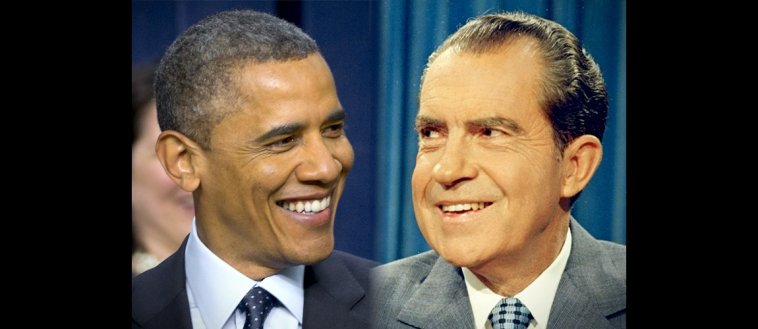Barack Obama’s approval ratings are finally higher than Richard Nixon’s. But this is only because forty years ago Nixon was in the midst of a dramatic collapse in public support from which he would not recover.
Videos By Rare
Obama’s Gallup approval rating is holding just under 50%. It does not yet show signs of damage from the trifecta of scandals (the IRS targeting conservative groups, the Justice Department targeting the press, and the Benghazi leadership failure and cover-up) plaguing the administration. Forty years ago Nixon’s approval was five points lower, but this was a record low for the well-liked 37th president.
As previously noted, Nixon was a much more popular president than Obama. In his first term Nixon’s Gallup approval levels averaged around six points above Obama, and were generally above the long term historical average. Obama by contrast has had below-average approval for almost his entire presidency. Nixon’s re-election was the strongest in contemporary history up to that time, winning 49 states and over 60% of the vote. Obama’s was arguably the weakest re-election ever, shedding both popular and electoral votes from his 2008 total. At the time of his re-inauguration in January 1973, Mr. Nixon’s approval rating was at a career-high 67%, fifteen points above where Mr. Obama was last January.
But even as Nixon soared back into office there were straws in the wind. Ten days after his second term began, former aides G. Gordon Liddy and James W. McCord Jr. were convicted of conspiracy, burglary and wiretapping related to the Watergate break-in. On April 30, in a damage-control move to insulate Nixon, chief of staff H.R. Haldeman, domestic advisor John Ehrlichman, and Attorney General Richard Kleindienst resigned. White House Counsel John Dean, who had been cooperating with Watergate investigators, was fired. We have seen no comparable shakeups at the lockstep Obama White House, which has made the Nixon team’s stonewalling look quaint by comparison.
This was around when Nixon’s approval rating began to plummet. In the first six months of 1973 his numbers dropped 23 points, from 67% in January to 44% in June. By the end of the summer he would be in the low 30s. By the end of the year, in the 20s. Obama’s numbers poke along around 50%, slightly below average but not moving dramatically one way or another. The public is increasingly concerned about the Obama administration’s scandals, but this has yet to translate into an approval hit for the president. Obama’s numbers won’t drop until solid links between the alleged illicit activity and the White House are established.
There were other factors contributing to Nixon’s drop in support in the spring of 1973 – a sudden spike in inflation and a political dispute over bombing Cambodia among them. In June 1973, the Watergate hearings were just getting going. It was before “I’m not a crook,” the Oval Office tapes, the 18 and a half minute gap, the Saturday Night Massacre, and still 14 months before Nixon’s resignation. Today people think that these events typified Nixon’s term in office, and that he had always been disliked. But Nixon’s fall was stunning because he was a wildly popular president with a solid list of domestic and international policy achievements. If it could happen to him, it could happen to a much weaker president. Like the one we have in office right now.
James S. Robbins is Deputy Editor of Rare. Follow him on Twitter at @James_Robbins

